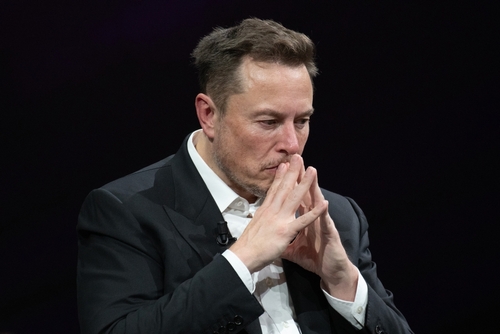Tesla (Nasdaq: TSLA) has been on quite a ride lately.
After hitting lows around $110 in early 2023, the electric vehicle pioneer surged more than 300% to around $480 by the start of this year. That momentum was fueled by excitement around the company’s AI initiatives and its autonomous driving potential.
Then came the fall. CEO Elon Musk’s spats with the company’s board over his role in the Trump administration – and now his falling out with the Trump administration – have soured the enthusiasm a bit. (That being said, Tesla was one of the biggest winners in the S&P 500 today at nearly 4%, signaling that there’s still plenty of optimism surrounding the stock.)
View larger image
The company that revolutionized the auto industry continues to push boundaries. Tesla isn’t just an automaker anymore – it’s an AI company, energy storage provider, and autonomous vehicle developer all rolled into one.
From its Gigafactories producing millions of vehicles to its growing Supercharger network, Tesla has built an impressive empire. Its recent results show a company still firing on multiple cylinders.
Tesla delivered nearly 1.8 million vehicles in 2024 and generated massive free cash flow. The company’s energy storage business is booming, with deployments growing 154% year over year. Plus, its Full Self-Driving technology is advancing rapidly, with the company accumulating billions of miles of real-world driving data.
However, Tesla also hit some speed bumps during the first quarter of 2025. Revenue dropped 9% year over year to $19.3 billion as the company simultaneously updated Model Y production across all four factories. Vehicle deliveries fell 13%, and operating income plunged 66% to just $399 million.
While these struggles were largely due to the Model Y changeover, they show how quickly Tesla’s results can swing.
Let’s see what The Value Meter reveals about Tesla’s current valuation.
Tesla’s enterprise value-to-net asset value (EV/NAV) ratio sits at 11.99, which is actually slightly below the average of 12.37 for companies with positive net assets. That might surprise some investors given Tesla’s premium reputation.
However, the real story emerges when we look at cash generation. Tesla’s quarterly free cash flow averaged just 2.43% of its net assets over the past four quarters.
While the company posted positive free cash flow in each of those quarters – no small feat for a capital-intensive manufacturer – this performance lags well behind the 8.33% average for companies with consistent cash generation.
In simpler terms, Tesla is getting less cash out of each dollar of its assets than many of its peers are. That’s concerning for a company trading at such elevated levels.
Tesla’s challenges are real. The EV market is getting more competitive by the day. Traditional automakers like Ford and GM are pouring billions into electric vehicles, while new players like Rivian are nipping at Tesla’s heels. Price cuts have pressured margins, and the company faces uncertainty around government EV incentives.
On the flip side, Tesla’s competitive advantages remain formidable. The company’s Supercharger network is unmatched, its manufacturing efficiency continues to improve, and its software capabilities give it an edge in the autonomous driving race.
The bottom line? While Tesla commands a premium valuation, its current price doesn’t seem wildly out of line with other growth companies. The company’s cash generation, while positive, isn’t strong enough to justify paying a significant premium for the stock.
For investors who believe in Tesla’s long-term vision of autonomous vehicles and sustainable energy, the current price might be reasonable. But don’t expect a bargain at these levels.
The Value Meter rates Tesla as “Appropriately Valued.”
What stock would you like me to run through The Value Meter next? Post the ticker symbol(s) in the comments section below.



